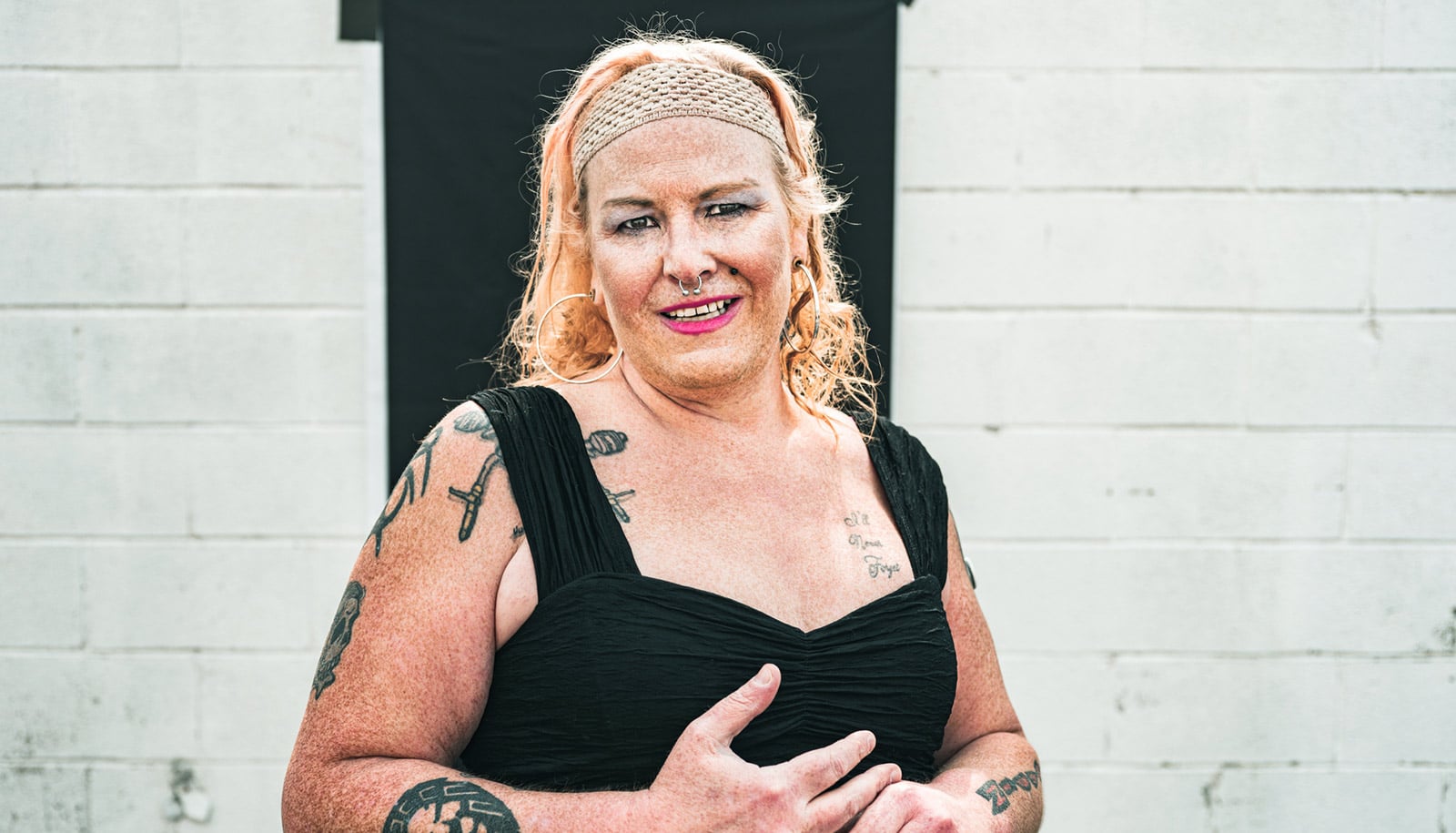New research identifies sources of support for transgender young people, findings that indicate negative consequences from anti-trans legislation.
Conservative legislators around the country have found a new flashpoint in their attempt to wage a culture war: transgender rights. A flood of bills—many already signed into law—aim to place limits on access to health care, education, entertainment, bathrooms, sports, and more. Those driving the changes claim they are essential for protecting young people, whether from what they say are damaging surgeries, liberal indoctrination, or unfair competition on the sports field.
“They are trying to kill us and make us fade away as if we never existed.”
Of the 430 bills curtailing LGBTQIA+ freedoms currently being tracked by the American Civil Liberties Union—many focused on gender identity—nearly 200 are connected to schools and education, and more than 100 to healthcare, particularly minors’ access to gender-affirming care. “The group of people that we can protect as quick as possible is children,” one of the bills’ advocates, Terry Schilling, of the conservative American Principles Project, told CNN.
But researchers behind the first national, longitudinal study of transgender and non-binary youth say that instead, the new laws could have a destructive impact on young people’s mental health.
Since 2020, Boston University’s Project AVANT (Advancing Voices of Adolescents Identifying as Non-Binary and Transgender) has surveyed hundreds of transgender and gender-diverse (TGD) kids about their experiences and mental health. In a paper published in the Journal of School Psychology, researchers found 69.9% of study participants, who represented 44 states, reported clinically significant anxiety. More than half said they felt clinically depressed, while an equivalent proportion admitted to self-harming. By comparison, the numbers for youth overall are much lower, if still alarming: 15% of children aged 12 to 17 reported having at least one major depressive episode in 2022, according to the nonprofit Mental Health America.
“We’ve seen high rates of depression, anxiety, suicidal ideation, and PTSD,” says Melissa Holt, a Project AVANT codirector and associate professor of counseling psychology in the Wheelock College of Education & Human Development. “To me, it feels quite devastating that these are kids who are in states where they feel silenced and harassed, that their identities are somehow a target for discrimination.”
Opponents have blasted anti-trans efforts as misguided, as well as harmful, contesting that surgery is life-saving and that everyone benefits from the inclusion of trans athletes in sports. President Joe Biden told The Daily Show that the push to restrict trans rights, especially those of children, was cruel and “close to sinful.”
“Their identity is essentially being silenced and not valued in the classroom,” says Holt, who’s also a Wheelock associate dean for faculty affairs. “There’s so much research that indicates that inclusive policies, whether at the school or state level, are beneficial.”
Policies have personal consequences
The Project AVANT team has been surveying kids every six months—starting with an initial cohort of more than 250 youth with an average age of 16—asking questions about their mental health, perception of school belonging, and support systems. Holt says that as the legislative environment has become more hostile to LGBTQIA+ rights, the team—which also includes researchers from BU School of Public Health and a researcher from Boston Children’s Hospital and Harvard Medical School—has added new questions about sex education in schools, involvement in sports, and other topical issues.
Although the study isn’t the first to look at the mental health of TGD youth, it stands alone in tracking participants over time and in bringing in a more representative sample of gender-diverse children. The researchers also secured a waiver of guardian consent for the study to allow more youth to take part, including those who might not be supported by their families. Holt says that means they can highlight details that have been missing from past research.
For example, she says, “We noticed that nonbinary assigned female at birth adolescents were particularly reporting symptoms.” While 57.9% of all surveyed youth said they had experienced clinically significant depression, the proportion ranged from 43.9% for transgender females to 67.1% for those who identified as nonbinary assigned female at birth (AFAB). And when it came to protective factors—like nondiscrimination policies and school connectedness—they found previously unseen differences between gender groups: having a school-based gay-straight alliance seemed to be associated with lower anxiety in nonbinary assigned male at birth youth compared to nonbinary AFAB students and transgender males.
One other consistent result: “Participants were really using open-ended boxes and wanted to share their experiences,” says Holt. Like these answers to one question asking how youth had been impacted by new policies described as anti-LGBTQIA+:
I am scared of what might happen to me if these laws are allowed and persist to include me and my peers.
I think that it is damaging to prevent and pretend like the LGBT+ community doesn’t exist, and it makes me sad that there are people who think we are a danger to kids.
They are actively discriminating against us and taking our safe spaces, coping mechanisms, and ways of living happily from us. They are trying to kill us and make us fade away as if we never existed.
Many of the comments also added to broader conversations around LGBTQIA+ rights, says Holt, with youth confronting what they felt was their othering by society and politicians. “Kids were saying things like, ‘Just see us as full people, accept us—this gender identity is only one part of us, don’t let that be the only factor that defines us.'”
Anti-trans laws and schools
In a recent paper in the Journal of Adolescent Research, the Project AVANT team found the most common source of support for TGD youth was their peers: 91% said friends and partners were essential to their well-being. Friends were often the first people they discussed their identity with and also key advocates, speaking up on their behalf to teachers, family, and other friends. Many youth—37%—listed family as a key support, with participants specifically calling out female-identified extended family members, like aunts and grandmothers, as being especially helpful, particularly when parents and siblings didn’t accept their identity. A smaller number—only 6%—described online communities as a main source of support.
When it came to schools, the researchers concluded teachers and school counselors “played a critical role in creating a safer place for… participants and helping them feel understood and seen.”
“One of the things that came out very clearly is the students talk a lot about whether their school talks about gender and gender identity as a concept, and the importance of that for them,” says Jennifer Greif Green, a project co-director and Wheelock professor of special education. “School policies related to sports and restroom use were important too.”
Green and Holt both encourage schools to adopt inclusive policies that acknowledge a person’s full identity—using their pronouns, having appropriate restrooms, allowing participation in sports, offering books that represent diverse gender identities, and expanding access to counselors.
“Our participants noted they would like people they could talk to and not have to hide parts of their identity,” says Holt.
But many of those best practices are now illegal in some states, soon to be outlawed in many more, and politically tough to implement in others. In Utah, schools were recently given the legal right to out transgender youth to their parents. So, how can teachers balance what the evidence says is best for kids and what the law says is legally right? Some are deciding they can’t.
“That topic comes up frequently in our classes,” says Green of the discussions she has with educators, “because we’re sometimes talking to [BU] students about best practices for supporting youth that don’t always align with the political climate of the schools and communities they’re working in.”
Next up for the researchers is expanding their study: applying for bigger grants, tracking youth as they hit 18 and can make independent choices about surgery, and pulling in a greater diversity of participants, particularly those with intersectional identities. Project AVANT is about to enter its sixth survey cycle, and given the major uptick in anti-trans bills and rhetoric, it seems likely the political and social environment will continue to harm the lives and mental health of many TGD people.
Resource for gender-diverse young people
“A key message we would like to convey to gender-diverse youth is that they are not alone. There are adults who are available to support them and resources they can access at any point,” says Holt. “For caregivers of gender-diverse youth, know that your support is essential to the well-being of your children.”
The Project AVANT team recommends the following supports for TGD youth: the Trans Lifeline (877-565-8860); the Trevor Project (866-488-7386, or text START to 678-678); and the Samaritans (988, call or text). They also highlight resources for families, friends, and caregivers, including from PFLAG, healthychildren.org, and the Human Rights Campaign.
This research had funding from a Wheelock College of Education & Human Development Large Faculty Grant and the Dr. Ann S. Ferren Research Fund in Education Award. Participant recruitment support was provided by Karen Morales and Meghan Roe of Marketing Magnet.
Source: Boston University



